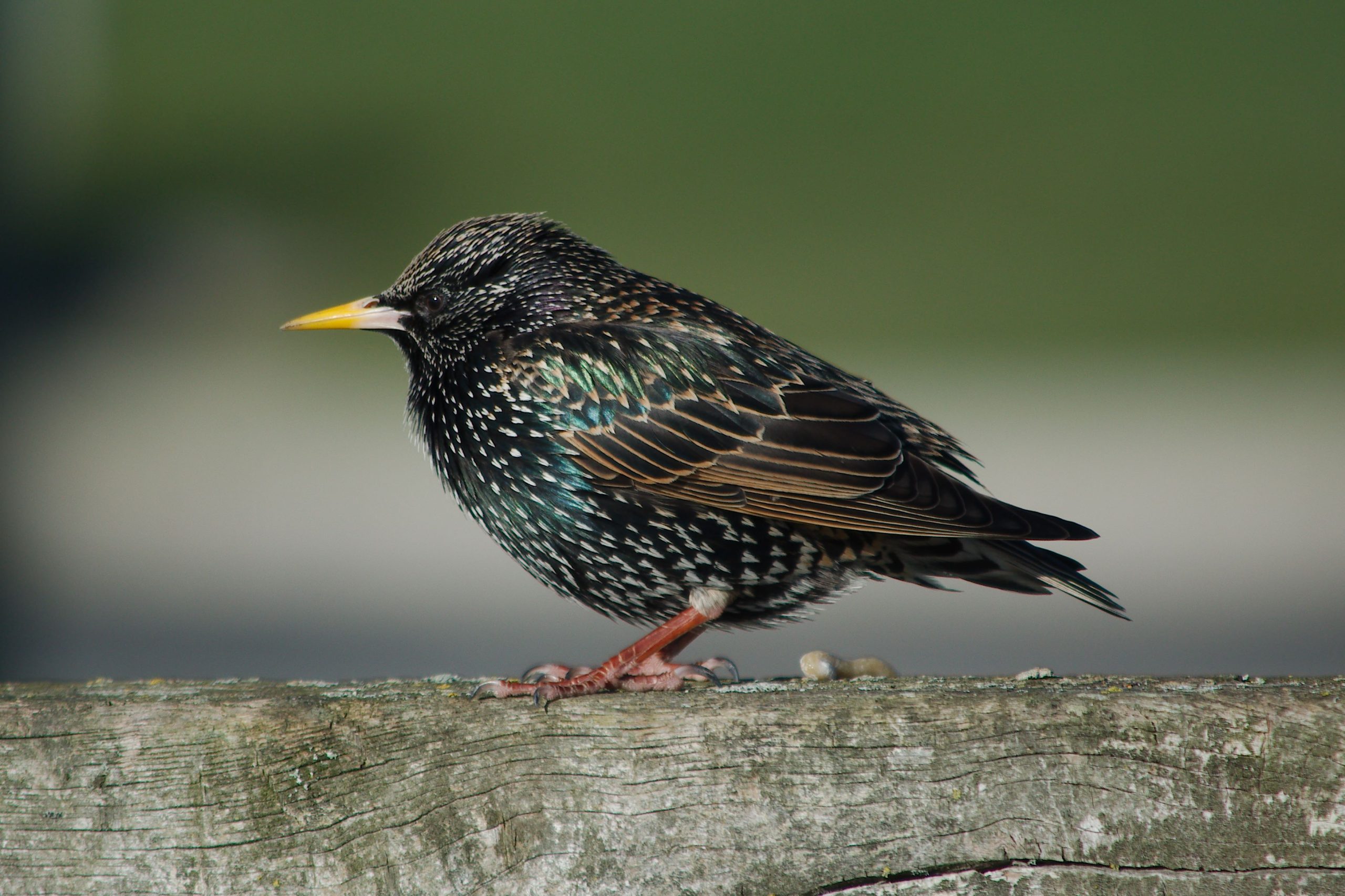Arizona is home to a diverse array of bird species, and one that stands out among the rest is the common starling. Known for their iridescent black plumage and bold personalities, starlings are a familiar sight in many parts of the state.
Quick Facts
- Starlings belong to the family Sturnidae and are native to Europe, Asia, and Africa
- They were introduced to North America in the late 1800s and have since spread across the continent.
- Starlings are highly adaptable and can thrive in a variety of habitats, from urban areas to farmland to forests.
Physical Dimensions
Adult starlings typically measure 7.5-9 inches long, with a wingspan of 12-17 inches. They weigh around 2-3.5 ounces on average. Males and females are similar in size.
Identification
Both male and female starlings have glossy black feathers that shine with purple and green iridescence in the sunlight. In the winter, their plumage is speckled with white spots. Starlings have long, pointed yellow bills in the summer that turn dark in the winter. Their legs are pinkish-red.
Local Habitats
In Arizona, starlings can be found in a variety of habitats across the state. They are common in urban and suburban areas, often gathering in large flocks in parks, neighborhoods, and shopping centers. Starlings also inhabit agricultural areas and open grasslands.
Some specific locations where starlings have been spotted in Arizona include:
- Phoenix and its surrounding cities
- Tucson
- Flagstaff
- Yuma
- Grand Canyon National Park
Natural Habitat
Starlings are highly adaptable and can make their homes in many different landscapes. They prefer open areas with short vegetation like lawns, pastures, and fields. Starlings also inhabit forest edges and areas with scattered trees.
What They Eat
Starlings are omnivorous and opportunistic eaters. Some of their favorite foods include:
- Insects like beetles, grasshoppers, and caterpillars
- Spiders and snails
- Fruits such as cherries, grapes, and berries
- Grains and seeds
- Food waste and scraps in urban areas
Migratory Behavior
Most starlings in Arizona are year-round residents and do not migrate. However, some northern populations may move southward in the winter to escape harsh conditions.
Conservation Status
Due to their highly adaptable nature, starlings are not threatened and are listed as least concern. However, they are considered invasive in many areas outside of their native range and can cause problems by competing with native birds for food and nesting sites. In Arizona, starlings are not protected and are often considered a nuisance by farmers due to their tendency to feed on crops in large flocks.
With their bold personalities and striking looks, starlings will catch your eye as you explore Arizona’s diverse landscapes. Watch for these fascinating birds on your next birding adventure in the Grand Canyon state!


